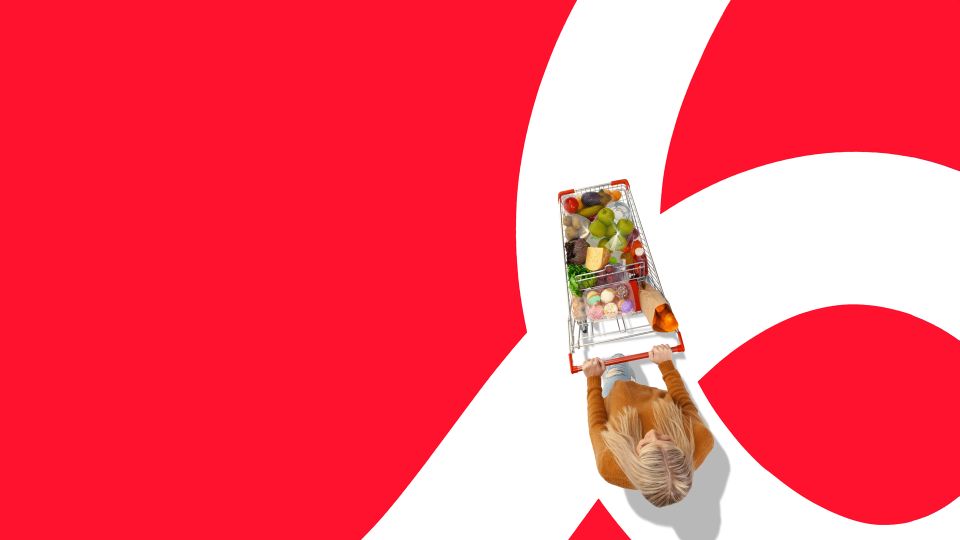Direct mail delivers customer engagement rates that dwarf those of every other marketing channel, as the Association of National Advertisers reports. That’s the main reason ever-increasing postage rates sometimes land so hard on the clients Brian Schneider supports at Quad.
As marketers contemplate the financial challenges of the increased rates, Schneider, Quad’s Director of Postal Optimization, can sense some resignation as they tell him, “I’ve done everything I can to reduce my costs.”
It’s easy to see why they feel that way, given that the U.S. Postal Service has hiked prices seven times since 2021, with the latest taking effect on July 14. The increases have produced historic challenges for commercial mailers, who have had to shoulder aggregated increases ranging between 37% and 83% (depending on the class of mail and other factors). “It’s changing the way we all operate,” Schneider says.
Yet, there is still reason for optimism: “I would say in the majority of conversations, there’s always a path to find additional savings,” Schneider notes. “Those opportunities might require change — but obviously the time for change is now.”
Optimize your mailing jobs
Making changes to save money doesn’t necessarily have to be painful. For starters, customers can avoid a sizable portion of increased postage costs by restructuring their mass mailings to qualify for USPS incentive and discount programs. These programs reward clients that package their mail jobs in a way that simplifies and lowers delivery costs, takes on logistical tasks for the USPS or experiments with technology that drives greater engagement and response.
To be clear, none of the methods, either alone or taken together, completely negate the impact of the Postal Service’s price increases. But they can significantly optimize savings and stabilize mailing costs in a meaningful way, according to an analysis from Quad, which prints and delivers direct mail, catalogs and periodicals that reach up to 89% of the United States in any given ZIP Code.
As one of the largest USPS customers, Quad has intimate knowledge of cost variables — changing paper types and sizes, for instance — as well as optimization strategies that leverage USPS discount opportunities.
The important thing to remember about these measures is “there is no silver bullet,” as Schneider told clients at the 23rd Quad Postal Conference this spring. “There isn’t one thing that’s going to fix all this,” he said. “It’s a layering effect, and that’s how we’ve got to think about postal optimization.”
To that end, Quad offers programs that help clients organize mailings to meet eligibility requirements for USPS discounts.
The newest, Household Fusion, is a first-of-its-kind, dynamic postal optimization program that can combine various catalogs and other marketing mail into one recyclable polybag destined for the same household. Another application of Household Fusion enables publishers to bundle their magazines with those from other publishers, also in a single polybag.
Essentially, Household Fusion uncovers co-mailing possibilities regardless of mail types, allowing Quad to accurately divide postage, ensuring precise execution and significant savings among publishers and marketers. The company’s print production volume and operational scale create efficiencies, such as revealing address commonalities, which can be leveraged through Household Fusion optimization.
The current USPS rate environment, with twice-yearly increases expected to continue for the near future, requires rethinking core elements of a company’s mailing strategies and fearlessly changing if the data suggests better outcomes. It also calls for adopting an “opt-in” mentality — utilizing data science experts to help make your mail item as attractive as you can to as many solutions as possible.
Catalog-based businesses in particular are in a hard spot as postal increases continue to compound. Even some of the largest catalog companies need to take a fresh look at optimization opportunities to protect their profitability, says Eric Knapp, Vice President of Enterprise Solutions at Quad.
By adopting an optimization mindset, catalog publishers can restore some of the financial flexibility they’ve lost to the price hikes, Knapp adds. But it’s important to take advantage of all opportunities — like considering less expensive catalog formats.
“Optimization is the key,” says Knapp. “You don’t want to home in on just one solution.”
And, having seen the programs work repeatedly for many hundreds of clients, Schneider says he’s optimistic: “With a continuous improvement model, we can find ways to offset these postal increases and keep print viable for many years to come.”
Improving marketing effectiveness
Managing your mail differently is one way of coping with postal increases. Here's another: proactively taking advantage of strategies to improve direct mail response rates. Even a slight increase in DM response — as little as 1% — can bring in new revenues that more than offset postal rate increases.
John Puterbaugh, Quad's VP of Advanced Media and Innovation, encourages marketers to explore three key data-driven options for driving results:
The unifying principle behind each of these approaches: taking an integrated, hybrid approach to collecting data about customers from both printed materials delivered to the home and behaviors derived from online activity.
By anchoring the information at the household level, Puterbaugh says, marketers can build campaigns that reach the right people in the right channels, both offline and online. The integration produces insights that lead to superior returns, he adds.
“The effectiveness of print is due to its persistence. It has time and duration,” he says. “When you amplify this through the mailing cycle, you can start to warm and reach those same people through other channels, including social and digital. These additional touches throughout the mailing cycle, over a 30-day period, improve response.”
The good news, Puterbaugh adds, is that “as costs go up, we’re seeing marketers move toward smarter, more efficient mailing strategies based on actions — not just mailing to a list every month.”
Want to continue the conversation? Please contact us at info@quad.com | 888-782-3226



